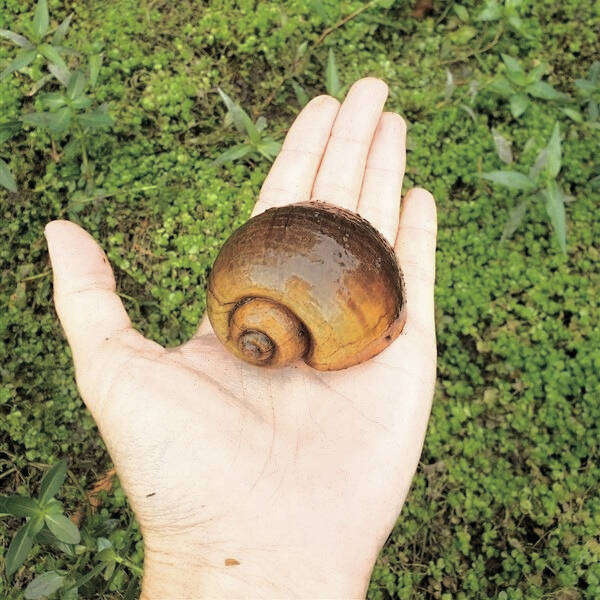Zebra mussels discovered in North Carolina | Bladen Journal
Zebra mussels discovered in North Carolina Elizabethtown Bladen Journal


The Presence of Zebra Mussels in Iredell County Waterbody

The N.C. Wildlife Resources Commission (NCWRC) announced this week that zebra mussels, a harmful invasive aquatic species, have been identified in an Iredell County waterbody. This is the first time this species has been identified in the wild in North Carolina.
Investigation and Confirmation
On Sept. 21, NCWRC, with assistance from scuba divers from the U.S. Fish and Wildlife Service, investigated and confirmed a report of zebra mussels in a quarry on private property.
Containment and Treatment
NCWRC believes the mussels are contained to the quarry and is working on options for treatment while continuing its investigation.
Risks and Impact
Zebra mussels are prolific. Adult mussels can move to other water bodies by attaching themselves to boats, docks lifts and other water-related equipment. Microscopic larvae can be transported in any water that is moved to another location including through diving equipment, live wells, bait buckets, boat bilges, or other gear.
Zebra mussels can quickly take over an environment once they are established and affect the health of other aquatic wildlife by disrupting the food chain and changing the chemistry of the water.
They are capable of clogging both public drinking and wastewater systems, as well as damaging recreational equipment.
Legislation and Prevention
In March 2021, zebra mussels were found living in moss balls that were being sold in pet stores for aquarium use. Because of their destructive impact, it is unlawful to transport, purchase, possess, sell or stock zebra mussels in public or private North Carolina waters.
To prevent the spread of invasive species NCWRC offers the following guidance:
- Clean: Equipment of all aquatic plants, animals and mud.
- Drain: Water from boats, live wells, bait buckets and all equipment.
- Dry: All equipment thoroughly.
- Never Move: Fish, plants or other organisms from one body of water to another.
To report suspected zebra mussels, please contact the NCWRC’s district fisheries biologist offices.
Visit NCWRC’s aquatic nuisance species webpage for guidance on disinfecting snorkel and SCUBA gear and for more information on zebra mussels.
Sustainable Development Goals (SDGs)
The presence of zebra mussels in North Carolina’s waterbodies highlights the importance of addressing invasive species as part of achieving the Sustainable Development Goals (SDGs). Specifically, SDG 14: Life Below Water aims to conserve and sustainably use the oceans, seas, and marine resources for sustainable development. By preventing the spread of invasive species like zebra mussels, we can protect the biodiversity and health of our aquatic ecosystems, contributing to the achievement of SDG 14.
How Can You Help?
Do not transport live fish from one water body to another.
Even if a fish looks fine on the outside, it may carry the parasites or other pathogens and can introduce disease. Illegal stockings can result in unwanted introductions that can have irreversible consequences. The Commission requires a stocking permit to stock any fish into North Carolina’s public waters.
Carefully clean all equipment after fishing.
Rinse all mud, dirt, sand and all visible plants, fish and animals from equipment (see list below). Aquatic nuisance species are known to adhere to these kinds of materials and can potentially be carried on gear from one stream to another. Careful cleaning using disinfectants such as household bleach will kill all forms of the parasite and reduces the risk of spreading this and other aquatic nuisance species. Remember to rinse your equipment thoroughly after using bleach to prevent this chemical from entering bodies of water.
Dispose of fish parts carefully when cleaning fish.
Dry disposal is best; dispose of the carcass in the garbage, by deep burying, or by total burning. Please do not dispose of fish heads, skeletons or entrails in any body of water. This can spread parasites and disease. Also, don’t discard entrails or heads of fish down a garbage disposal. Many parasites can survive most water treatment plants and infect areas downstream.
SDGs, Targets, and Indicators
1. Sustainable Development Goal: Life Below Water
– Target 14.1: By 2025, prevent and significantly reduce marine pollution of all kinds, in particular from land-based activities, including marine debris and nutrient pollution.
– Indicator 14.1.1: Index of coastal eutrophication and floating plastic debris density.
2. Sustainable Development Goal: Life on Land
– Target 15.8: By 2020, introduce measures to prevent the introduction and significantly reduce the impact of invasive alien species on land and water ecosystems and control or eradicate the priority species.
– Indicator 15.8.1: Proportion of countries adopting relevant national legislation and adequately resourcing the prevention or control of invasive alien species.
3. Sustainable Development Goal: Responsible Consumption and Production
– Target 12.5: By 2030, substantially reduce waste generation through prevention, reduction, recycling, and reuse.
– Indicator 12.5.1: National recycling rate, tons of material recycled.
4. Sustainable Development Goal: Partnerships for the Goals
– Target 17.6: Enhance North-South, South-South, and triangular regional and international cooperation on and access to science, technology, and innovation and enhance knowledge sharing on mutually agreed terms, including through improved coordination among existing mechanisms, particularly at the United Nations level, and through a global technology facilitation mechanism.
– Indicator 17.6.1: Number of science and/or technology cooperation agreements and projects between countries.
Analysis
1. The SDGs addressed or connected to the issues highlighted in the article are:
– SDG 14: Life Below Water – The article discusses the presence of zebra mussels, an invasive species, in a waterbody in North Carolina. This relates to Target 14.1 of SDG 14, which aims to prevent and reduce marine pollution, including from land-based activities.
– SDG 15: Life on Land – The article mentions the impact of zebra mussels on the environment and other aquatic wildlife. This relates to Target 15.8 of SDG 15, which focuses on preventing the introduction and reducing the impact of invasive alien species on ecosystems.
2. The specific targets under the identified SDGs based on the article’s content are:
– Target 14.1: By 2025, prevent and significantly reduce marine pollution of all kinds, in particular from land-based activities, including marine debris and nutrient pollution.
– Target 15.8: By 2020, introduce measures to prevent the introduction and significantly reduce the impact of invasive alien species on land and water ecosystems and control or eradicate the priority species.
3. The indicators mentioned or implied in the article that can be used to measure progress towards the identified targets are:
– Indicator 14.1.1: Index of coastal eutrophication and floating plastic debris density – This indicator can be used to measure the level of marine pollution, including nutrient pollution and marine debris, which are relevant to Target 14.1.
– Indicator 15.8.1: Proportion of countries adopting relevant national legislation and adequately resourcing the prevention or control of invasive alien species – This indicator can be used to measure the efforts made by countries to prevent and control invasive alien species, such as zebra mussels, which are relevant to Target 15.8.
Table: SDGs, Targets, and Indicators
| SDGs | Targets | Indicators |
|---|---|---|
| SDG 14: Life Below Water | Target 14.1: By 2025, prevent and significantly reduce marine pollution of all kinds, in particular from land-based activities, including marine debris and nutrient pollution. | Indicator 14.1.1: Index of coastal eutrophication and floating plastic debris density. |
| SDG 15: Life on Land | Target 15.8: By 2020, introduce measures to prevent the introduction and significantly reduce the impact of invasive alien species on land and water ecosystems and control or eradicate the priority species. | Indicator 15.8.1: Proportion of countries adopting relevant national legislation and adequately resourcing the prevention or control of invasive alien species. |
| SDG 12: Responsible Consumption and Production | Target 12.5: By 2030, substantially reduce waste generation through prevention, reduction, recycling, and reuse. | Indicator 12.5.1: National recycling rate, tons of material recycled. |
| SDG 17: Partnerships for the Goals | Target 17.6: Enhance North-South, South-South, and triangular regional and international cooperation on and access to science, technology, and innovation and enhance knowledge sharing on mutually agreed terms, including through improved coordination among existing mechanisms, particularly at the United Nations level, and through a global technology facilitation mechanism. | Indicator 17.6.1: Number of science and/or technology cooperation agreements and projects between countries. |
Behold! This splendid article springs forth from the wellspring of knowledge, shaped by a wondrous proprietary AI technology that delved into a vast ocean of data, illuminating the path towards the Sustainable Development Goals. Remember that all rights are reserved by SDG Investors LLC, empowering us to champion progress together.
Source: bladenjournal.com

Join us, as fellow seekers of change, on a transformative journey at https://sdgtalks.ai/welcome, where you can become a member and actively contribute to shaping a brighter future.







